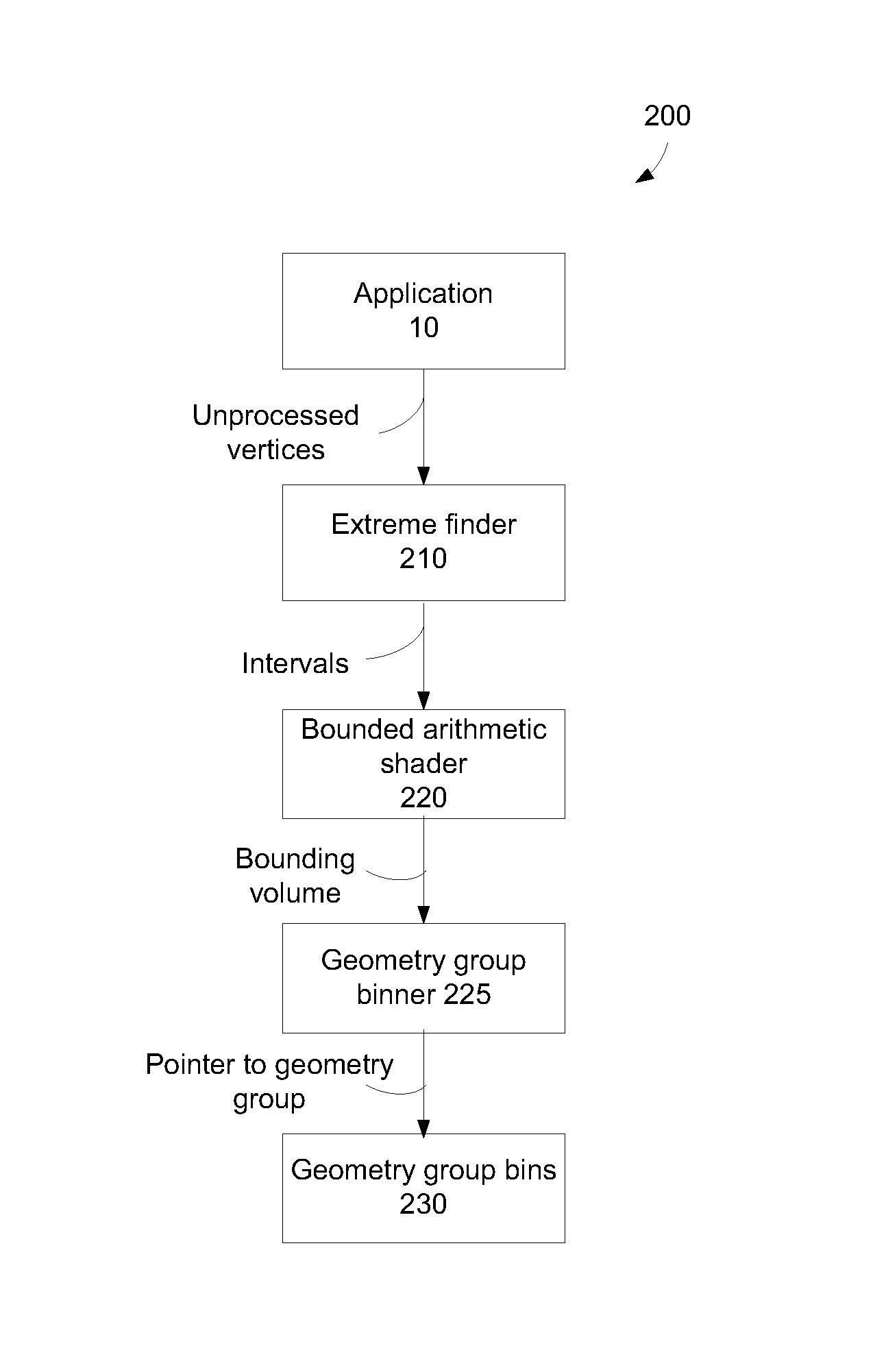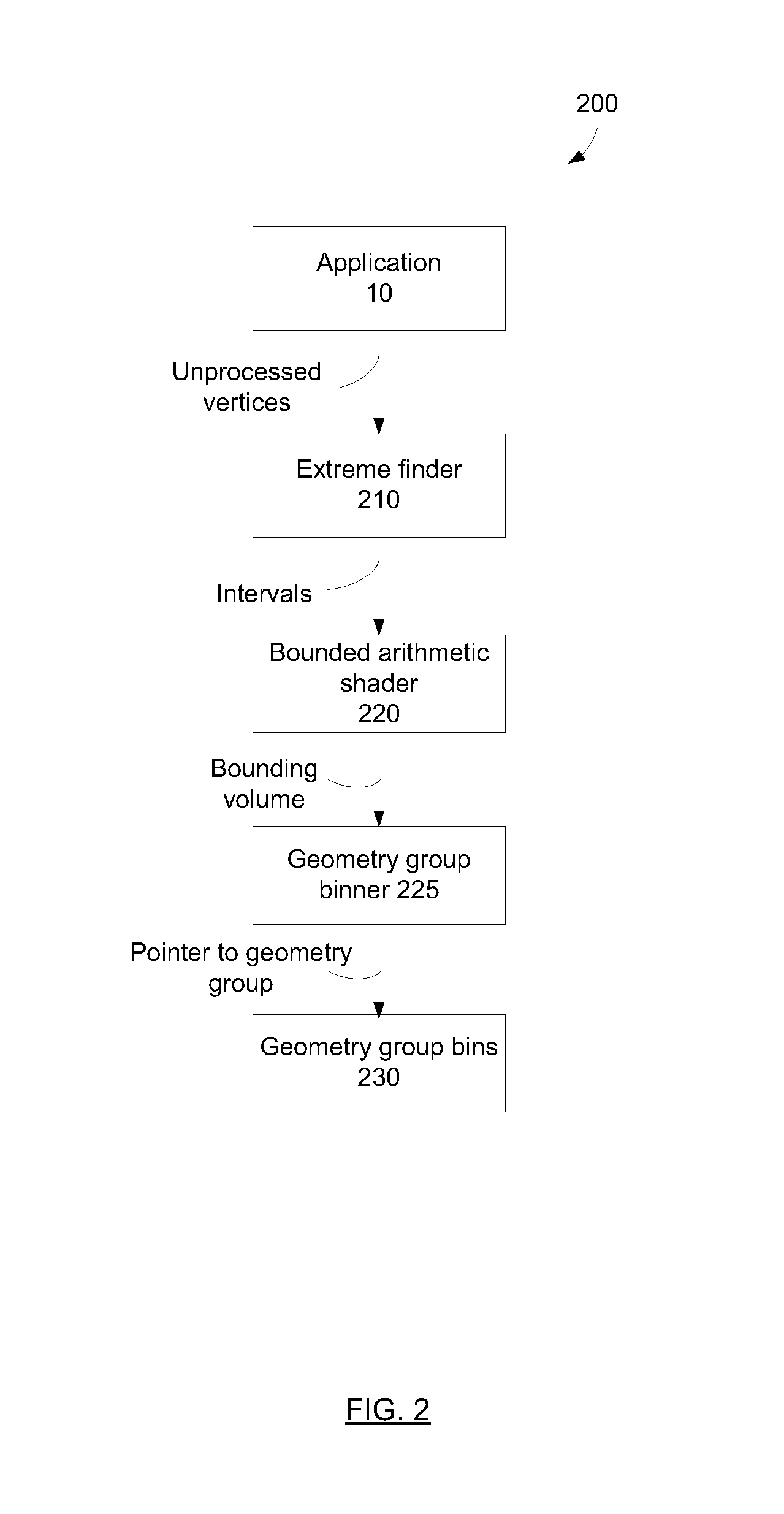Image Processing Techniques
a graphic processing and image technology, applied in the field of graphic processing, can solve the problems of affecting the performance of the rasterization system, unable to reuse the memory of an already processed bin for subsequent binning, and large memory used to hold vertices to be processed
- Summary
- Abstract
- Description
- Claims
- Application Information
AI Technical Summary
Benefits of technology
Problems solved by technology
Method used
Image
Examples
Embodiment Construction
[0012]Reference throughout this specification to “one embodiment” or “an embodiment” means that a particular feature, structure, or characteristic described in connection with the embodiment is included in at least one embodiment of the present invention. Thus, the appearances of the phrase “in one embodiment” or “an embodiment” in various places throughout this specification are not necessarily all referring to the same embodiment. Furthermore, the particular features, structures, or characteristics may be combined in one or more embodiments.
[0013]The publication in Anthony Apodaca and Larry Gritz, Advanced Renderman, Morgan Kauffman Publishers (2000) (hereafter “Renderman”) describes generating micropolygons, generating bounding volumes based on the generated micropolygons, and storing the bounding volumes and pointers to surfaces to be tessellated. RenderMan also allows the user to set a maxDisplacement parameter per geometric object, and this together with the non-displaced geom...
PUM
 Login to View More
Login to View More Abstract
Description
Claims
Application Information
 Login to View More
Login to View More - R&D
- Intellectual Property
- Life Sciences
- Materials
- Tech Scout
- Unparalleled Data Quality
- Higher Quality Content
- 60% Fewer Hallucinations
Browse by: Latest US Patents, China's latest patents, Technical Efficacy Thesaurus, Application Domain, Technology Topic, Popular Technical Reports.
© 2025 PatSnap. All rights reserved.Legal|Privacy policy|Modern Slavery Act Transparency Statement|Sitemap|About US| Contact US: help@patsnap.com



